Population Ecology
1/24
There's no tags or description
Looks like no tags are added yet.
Name | Mastery | Learn | Test | Matching | Spaced |
|---|
No study sessions yet.
25 Terms
why understand populations?
invasion ecology, conservation biology, disease ecology, restoration ecology
population density
number of individuals per unit area
can be absolute, or ecological
changes in response to food supply (functional response curves), and numerical response
ecological density
number of individuals per unit area of a suitable habitat
ex number of moose per ha of forest
numerical response
change in predator population density in response to changes in prey density
drivers are reproduction and dispersal
in relation to functional curves which are change in feeding rate
reproduction numerical response
time lag between peak prey population and peak predator population
predators need time to produce offspring, ex lynx and hares
non-synchronized predator prey dynamics
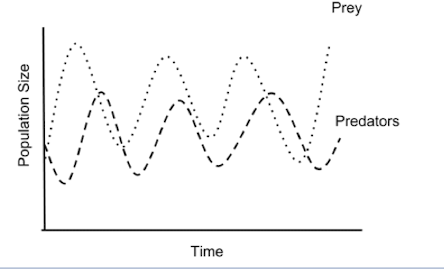
dispersal numerical responses
aggregative response
no time lag between the peak of predator and prey populations
predators are highly mobile and track prey across space, ex birds of prey
synchronized predator prey dynamics
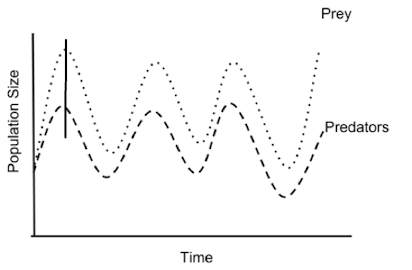
case study birds of prey numerical responses
predator and prey population densities track each other closely with no time lag
dispersal of kestrels and owls into areas with voles is what is driving the changes in densities
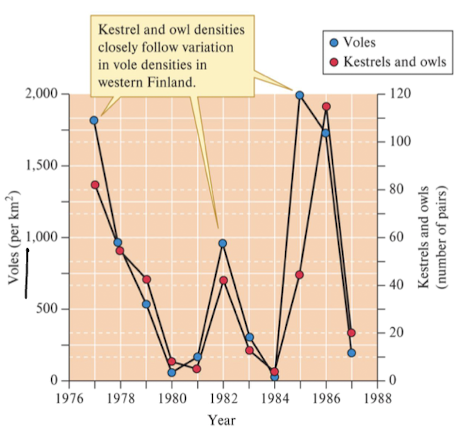
population distribution
geographic distribution of a species, limited by the physical environment (both abiotic and biotic conditions) and species niche requirements
distribution patterns
small scale individuals will have randomly, regularly, or clumped distributions
small scale depends on the species and can be km or m or smaller
random distribution
small scale
neutral interactions among individuals of a species, individuals have equal prob of appearing anywhere in an area
random disturbances, uniform distribution of resources
ex dandelions
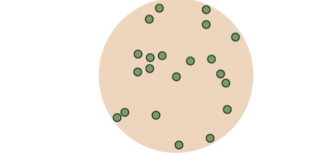
regular distribution
small scale
antagonistic interactions among individuals of same species, uniform distribution of resources and uniform depletion
ex red winged black bird
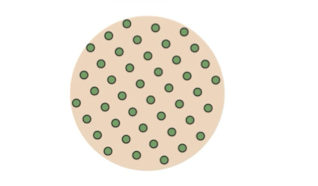
clumped distributions
small scale
mutual interactions and attractions
patchy resources, and dispersal limitations can reinforce
ex herds of elk
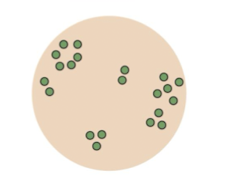
large scale distributions
individuals are clumped in hot spots, some species have a more restricted range and so are more localized in areas
why are some species limited in distribution
all organisms have limited resources and energy, it takes these resources to survive and reproduce and so being on the edge of their niche requirements is costly
evolution has helped aid species to survive in one specific area
dispersal
permanent movement of individuals usually from one population to another - increases range
distinct from migration due to permanence
immigration or emigration
seed dispersal adaptations
gravity, ballistic, wind - samara, ants/insects, water - coconuts, animals - burs or berries
range expansion and climate change
ex tree dispersal and range expansion following the pleistocene
different species (w different seeds) dispersed back north, speed and colonization depended on range of tolerance and niche size (and dispersal abilities)
ex range expansion and killer bees
africanized bees are an aggressive hybrid which began in brazil in order to survive in warm temp and produce lots of honey
but large swarms escaped and were able to find new colony locations, started spreading north into USA
temperature limited spread, as with mating with less aggressive species - but climate change may allow further north expanision
metapopulations
made up of groups of subpopulations living in patches of habitat connected by an exchange of individuals
only exist when dispersal is possible
specific habitat requirements
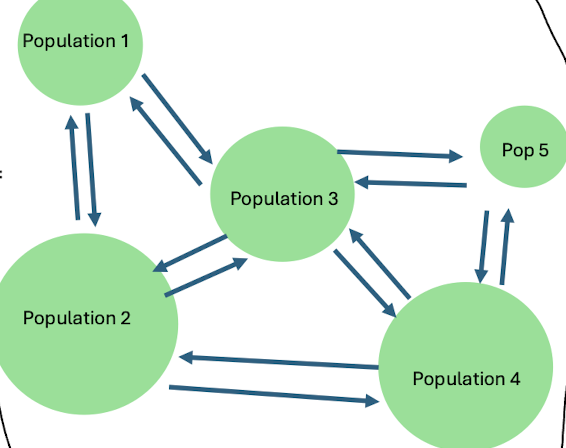
ex metapopulations and rocky mountain butterfly
specific habitat requirement is host plant lanceleaf stonecrop which has patchy distribution
population size is correlated with meadow size, individuals emigrate between
but fire suppression, climate change (forest encroachment) can change host plant potentially changing butterfly density
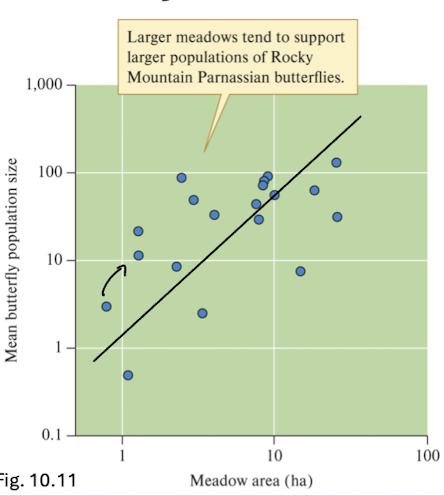
rarity
species rarity and commonness is influenced by geographic range - extreme or restricted
habitat tolerance - broad or narrow
local pop. size - large or small
combinations of these aspects determine rarity
common species
will have large geographic range, broad habitat tolerance, and large local population
ex dandelion and house sparrow
slightly rare species
only one or two aspects of rarity which slowly increases vulnerability
can be either small pop, restricted range, or narrow tolerance
FOR EX narrow habitat tolerance but large range and large population
rare species
three aspects of rarity, way more prone to extinction
will have restricted geographic range, narrow habitat tolerance, and small local population
ex gorilla
SARA
species at risk act, Canadian categorization
ranks species from extinct until not at risk